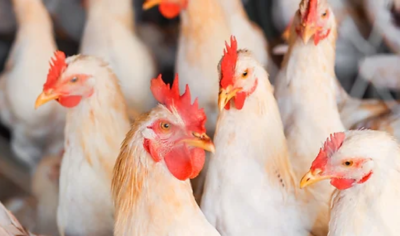Innovations in Poultry Vaccine Development: Addressing Challenges in Stability, Efficacy, and Delivery through Biotechnological Advances

Dr. Majed Hamed Al Saegh / poultry pathologist / Australia
Abstract
The poultry industry plays a critical role in global food security but faces persistent challenges from infectious diseases that reduce productivity and increase economic losses. Recent advances in biotechnology (Biotechnology) have revolutionised the development, stability, and delivery of poultry vaccines. This report examines the current state of poultry vaccine development, focusing on the role of biotechnology in overcoming traditional challenges such as antigenic variability (Antigenic variability), vaccine instability (Vaccine instability), and limited immunogenicity (Limited immunogenicity). It highlights recent breakthroughs, including third-generation vaccines (Third-generation vaccines), novel adjuvants (Novel adjuvants), and innovative delivery mechanisms (Innovative delivery mechanisms), alongside future research directions.
Introduction
Poultry production is an essential component of global food systems, providing affordable protein to billions of people worldwide. However, infectious diseases such as Newcastle Disease (ND), Avian Influenza (AI), and Mycoplasmosis pose significant threats. Vaccination remains the cornerstone of disease control, but traditional vaccines often fail to address emerging challenges, including genetic diversity (Genetic diversity) among pathogens and vaccine instability in field conditions. This report explores biotechnological innovations that enhance vaccine development, efficacy, and delivery.
Advances in Poultry Vaccine Development
- First-Generation Vaccines
Conventional live attenuated vaccines (Live attenuated vaccines) and inactivated vaccines (Inactivated vaccines) have long been the cornerstone of poultry immunisation. However, their limitations include:
Risk of reversion to virulence (Reversion to virulence) in live vaccines.
Reduced efficacy due to antigenic mismatch (Antigenic mismatch) with field strains.
Storage challenges, particularly for inactivated vaccines that require cold chains (Cold chain).
- Second-Generation Vaccines
Recombinant vaccines (Recombinant vaccines) and subunit vaccines (Subunit vaccines) represent significant advancements. By targeting specific antigens, these vaccines:
Eliminate the risks associated with live organisms (Live organisms).
Provide flexibility for multivalent vaccine formulations (Multivalent vaccines).
However, their reliance on adjuvants (Adjuvants) and higher production costs limits their widespread adoption.
- Third-Generation Vaccines
Nucleic acid-based vaccines (Nucleic acid-based vaccines), including DNA and mRNA platforms, have emerged as transformative tools. Key advantages include:
Rapid production timelines (Rapid production timelines), crucial during outbreaks.
Enhanced safety profiles (Enhanced safety profiles) due to the absence of live organisms.
Potential for customisation to match local pathogen strains.
Innovative Adjuvant Technologies
The development of advanced adjuvants (Adjuvants) has significantly improved vaccine efficacy. Examples include:
Nanoparticles (Nanoparticles): Serving as both carriers and immune stimulants (Immune stimulants).
TLR Agonists (TLR Agonists): Enhancing innate immune responses.
Emulsion-Based Adjuvants (Emulsion-Based Adjuvants): Providing stability and prolonged antigen release.
These adjuvants address the challenge of inducing robust and long-lasting immunity while minimising adverse reactions.
Delivery Innovations
Modern delivery systems are streamlining vaccine administration and enhancing field efficacy:
In Ovo Vaccination : Vaccinates embryos before hatching, ensuring early protection.
Spray and Aerosol Delivery (Spray and Aerosol Delivery): Widely used for mass vaccination in commercial settings.
Nanoparticle-Based Carriers (Nanoparticle-Based Carriers): Protect antigens from degradation and facilitate targeted delivery to immune cells.
Thermostable Vaccines (Thermostable Vaccines): Overcoming the dependency on cold chain logistics by maintaining efficacy under variable storage conditions.
Biotechnology in Pathogen Identification and Vaccine Design
Biotechnology (Biotechnology) has improved pathogen characterisation through genome sequencing (Genome Sequencing) and reverse vaccinology (Reverse Vaccinology). These tools enable the identification of conserved antigenic targets, reducing the risks of antigenic mismatch. Applications of CRISPR (CRISPR) and bioinformatics (Bioinformatics) further accelerate the design of precise and effective vaccines.
Current Challenges
Despite significant progress, several hurdles remain:
Pathogen Diversity (Pathogen Diversity): High mutation rates in viruses like AI complicate vaccine design.
Field Stability (Field Stability): Vaccines must withstand challenging environmental conditions in developing regions.
Cost Constraints (Cost Constraints): Advanced vaccines and adjuvants remain prohibitively expensive for small-scale producers.

Future Directions
To address these challenges, future research should focus on:
Developing universal vaccines (Universal Vaccines) targeting conserved epitopes across pathogen strains.
Enhancing the thermostability (Thermostability) of vaccines for deployment in resource-limited settings.
Exploring AI-driven vaccine design (AI-driven vaccine design) to predict and target emerging pathogens.
Scaling up production methods to reduce costs without compromising efficacy.
Conclusion
Biotechnological advancements have ushered in a new era of poultry vaccine development, addressing long-standing challenges in stability, efficacy, and delivery. As the global demand for poultry products continues to rise, these innovations will be critical for safeguarding animal health and ensuring sustainable production. Collaborative efforts between researchers, industry stakeholders, and policymakers are essential to translate these breakthroughs into widespread field applications.



